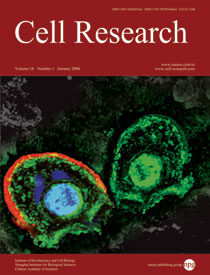
Volume 16, No 1, Jan 2006
ISSN: 1001-0602
EISSN: 1748-7838 2018
impact factor 17.848*
(Clarivate Analytics, 2019)
Volume 16 Issue 1, January 2006: 70-74
ORIGINAL ARTICLES
Inflammatory bowel disease requires the interplay between innate and adaptive immune signals
Dayna Shi1, Jyoti Das1, Gobardhan Das1
1Department of Molecular Genetics, Microbiology and Immunology, Robert Wood Johnson Medical School, University of Medicine and Dentistry of New Jersey, 661 Hoes Lane, Piscataway, NJ 08854, USA
Correspondence: Gobardhan Das(dasgo@umdnj.edu)
Inflammatory bowl disease (IBD) is a type 1 T helper cell (Th1)-mediated autoimmune disease. Various studies have revealed that environmental pathogens also play a significant role in the initiation and progression of this disease. Interestingly, the pathogenesis of IBD has been shown to be related to nitric oxide (NO) released from innate immune cells. Although NO is known to be highly toxic to the gut epithelia, there is very little information about the regulation of NO production, One major question in the etiology of IBD is how Th1 cells and pathogens interact in the induction of IBD. In present study, we focused on the regulation of NO. We show that macrophages require both interferon-γ (IFN-γ)-mediated and TLR4-mediated signals for the production of NO, which causes inflammation in the intestine and subsequently IBD. Thus, IBD is the result of concerted actions of innate immune signals, such as the binding of LPS to TLR-4, and adaptive immune signals, such as IFN-γ produced by Th1 cells.
Cell Research (2006) 16:70-74. doi:10.1038/sj.cr.7310009; published online 16 January 2006
FULL TEXT | PDF
Browse 1832


